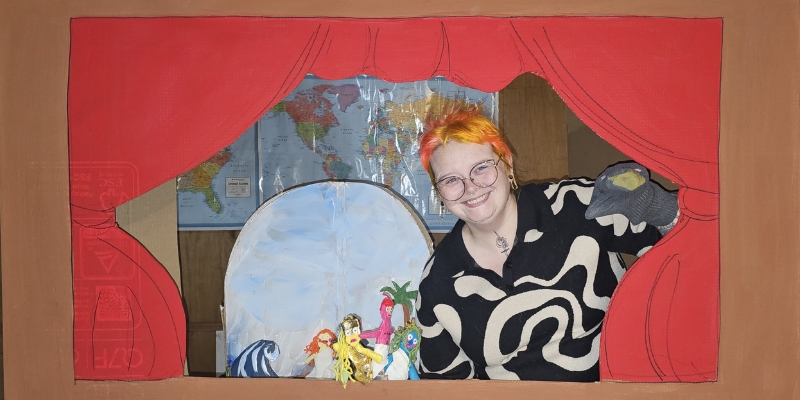Planetary scientist Dr. Alan Stern and astrobiologist Dr. David Grinspoon will be at the Museum of Flight on May 17 to discuss the New Horizons mission. NASA’s New Horizons spacecraft, launched in 2006, became the first spacecraft to pass by Pluto. During its flyby, New Horizons made detailed measurements and observations of Pluto and its five moons. This coming New Year’s Eve, New Horizons will offer up images of the most distant body ever explored, provisionally named Ultima Thule. It is an object in the Kuiper Belt, an enormous asteroid belt that extends from the orbit of Neptune to approximately 50 AU from the sun (50 AU = very far away).
Before an astronomically interesting evening with Stern and Grinspoon, here’s a brief timeline exploring the history of our solar system’s controversial “ninth planet.”
4.5 Billion Years Ago: Pluto was formed at the same time as the rest of the planets around the sun during the formation of our solar system. (The oldest mineral dated on earth is a zircon with an age of 4.4 billion years).
1840s: Urbain Le Verrier predicted the not-yet-discovered planet Neptune was beyond Uranus, based on perturbations in Uranus’s orbit. Observations of Neptune—discovered in 1846—made it clear there was ANOTHER planet besides Neptune disturbing Uranus’s orbit. (Spoiler alert: it was Pluto!)
1894: Astronomer and mathematician Percival Lowell founds the Lowell Observatory in Flagstaff, Arizona, and is integral in the early efforts to find Pluto. (Unfortunately Lowell died in 1916, a full 14 years before the discovery of Pluto).
1905: While observing the orbits of Neptune and Uranus, Lowell believes that they are being displaced from their predicted positions by the gravity of another body. He posits the existence of a possible ninth planet, and begins his search for the elusive ‘Planet X.’
1930: After a week of intense comparison of photographs of the night sky at the Lowell Observatory, astronomer Clyde Tombaugh announces his discovery of a ninth planet.
1930: In a stroke of inspiration, eleven-year-old Venetia Burney living in Oxford, England gives Pluto its name just one day after the announcement of Tombaugh’s discovery. Venetia suggests that, due to its nature as a dark and remote planet far from the warmth of the sun, the planet should be called ‘Pluto’ after the Greek God of the Underworld. Venetia’s grandfather relays the suggestion to his friend Herbert Hall Turner, professor of astronomy at the University of Oxford. The name is a hit, and the newly-discovered celestial body is quickly christened ‘Pluto.’ (The name was beloved not only for being fitting from a mythological standpoint, but also because the first two letters ‘PL’ served as homage to Percival Lowell, who made its discovery possible.)
1978: U.S. Naval Observatory astronomers James Christy and Robert Harrington notice that images taken of Pluto show a bump on its surface—and that the bump is moving. Pluto has a moon. Named Charon (the ferryman of the Underworld’s river of the dead in Greek mythology), it is approximately half the size of Pluto. (Four additional moons have since been discovered: Hydra, Nix, Kerberos, and Styx).
2006: NASA launches New Horizons, the fastest spacecraft in history, travelling at 36,000 mph. The Principle Investigator is Dr. Alan Stern, making New Horizons the 29th NASA space mission that’s seen his participation.
2006: Pluto is demoted to a dwarf planet. Celestial bodies are discovered on the edge of the solar system in the Kuiper Belt, and one of them—Eris—is found to be larger than Pluto. This sparks a heated discussion: should the solar system have more planets, or should ‘planet’ be redefined altogether? After much debate, the International Astronomical Union decides that Pluto, Eris, and Ceres (the largest asteroid that lies between the orbits of Mars and Jupiter) would be designated as dwarf planets.
2015: After 9 ½ years New Horizons reaches its destination, flying within 7,750 miles of Pluto.
2017: Planetary scientists gather at the Lunar and Planetary Science Conference. One presentation, ‘A Geophysical Planet Definition,’ stated, “In keeping with both sound scientific classification and peoples’ intuition, we propose a geophysically-based definition of ‘planet’ that importantly emphasizes a body’s intrinsic physical properties over its extrinsic orbital properties.” The presentation continues with the assertion: “A simple paraphrase of our planet definition – especially suitable for elementary school students – could be, ‘round objects in space that are smaller than stars.” Given that definition, Pluto is a planet.
2018: Dr. Alan Stern and Dr. David Grinspoon discuss Pluto as part of Town Hall’s Inside/Out season. Get your tickets here.
Story written by Jonathan Shipley.


